Last year, the primary focus of my training shifted. For my entire adult life, I had been both a strength enthusiast and a martial artist—in that order. When things started to open back up and I was able to train Brazilian Jiu-Jitsu (BJJ) regularly again, I decided to swap these priorities. I would, for the first time, focus more of my training time on BJJ than on strength training. This would give me a different perspective on the StrongFirst system as a “means to an end” (in this case, BJJ).
I knew right away that I needed to start with a solid program. By that point, I had spent years doing dedicated training cycles with Simple & Sinister, The Quick and the Dead, Built Strong, Kettlebell STRONG!, and other hardstyle programs, so I knew the value of following proven protocols. I also knew that I wanted something I could do in about three hours per week. Having spent so much time under the barbell and with double kettlebell the year before, I yearned to go back to basics with single kettlebell training.
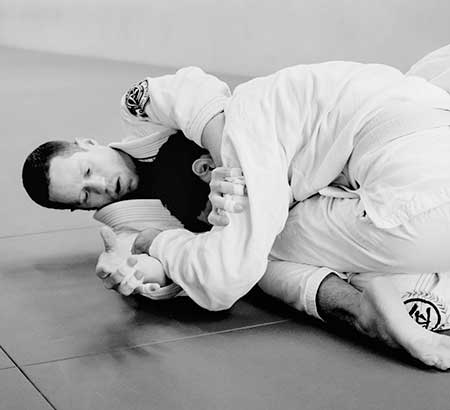
BJJ is hard on the body in almost every way, so I couldn’t be overly fatigued from additional work. After so much strength and hypertrophy training in 2020 (read my article “Be as Strong as You Look: 8 Weeks of Built Strong Training”), I needed to improve my conditioning, so I wasn’t sucking wind, while still training power and strength in a time efficient way. Given my joints get twisted every which way in BJJ, I also had to make sure I was doing something that would help prevent injury by making my body more resilient. And, of course, explosive hips and strong grip had to be a focus too, as they are two of the most important physical attributes in BJJ.
Okay, so those were a lot of prerequisites!
Kettlebells StrongFirst
In 2021, Pavel released his course Kettlebells StrongFirst on a popular video site for BJJ enthusiasts. It arrived at just the right time. The three-volume series and accompanying PDF document cover everything needed to get a BJJ athlete swinging a kettlebell, getting-up under load, and performing kettlebell push presses, cleans, and jerks. The package also has an overview of important StrongFirst principles, a primer on breathwork mastery, and five different programs depending on experience level. If done in order, the programs could easily take someone years to complete.
The beginner, beginner-to-intermediate, and pre-competition programs consist of goblet squats, swings, and get-ups. The intermediate and advanced programs progress from single clean-and-jerks to double clean-and-jerks—including the dreaded long cycle. You can learn more about one of these programs in Pavel’s recent article, “The Best All-Around Training Method EVER.”
I had spent the earlier part of the year working on my clean-and-jerks and hadn’t been training my one-arm swings and get-ups enough. I knew I had to build up my endurance slowly instead of doing what I typically do, which is skip to the most advanced/hardest training plan there is and suffer. So instead of jumping right to the advanced (long cycle) program, I started with the beginner-to-intermediate plan despite having over a decade of kettlebell training under my belt. Sometimes it’s fun to be a “white belt” again.
Swings and get-ups, my dear friends—it’s nice to see you again.
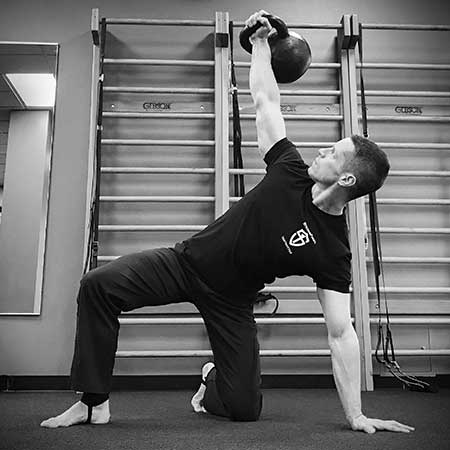
The Program
Training was three days per week (heavy/medium/light) which ended up being Tuesday, Thursday, and Sunday. Tuesday was my heavy day, Thursday was my medium day, and Sunday was my light day. As Pavel writes in the Kettlebells StrongFirst PDF document, “The heavy day is for making gains. The medium day is for solidifying them. The light day helps you recover before the next heavy day advance.” I found this to be very true.
Below is the basic structure:
Goblet Squats
I started with 3 sets of 3-5 reps with the same weight as my swings. This is used as a warm-up/stretch.
Swings
On heavy and medium days, I did 5 one-arm swings on the top of the minute, switching sides every minute. On light days, I switched to 5 two-arm swings on the top of the minute with a focus on speed. I went for as long as I could on heavy days while still passing the talk test (breathing evenly enough to speak). Once I failed the talk test, I kept that number of sets for the rest of the week. For example, if I did 12 sets of 5 swings on my heavy day, I’d then do the same on my medium and light days that week before pushing it again on the next heavy day.
Once I got to 20 minutes (100 total swings), I switched to sets of 5 swings every 30 seconds and kept going until I failed the talk test. I continued until I hit 20 minutes (200 swings total) or progress stalled for two weeks in a row. Then I would start over with 5 swings on the minute with a heavier kettlebell.
Get-Ups
I used three kettlebell sizes for the various days: a light kettlebell (for exaggerated pauses, rotations, or presses), a medium kettlebell (for perfect single reps), and a heavy kettlebell (for 1-3 partial reps to the elbow or hand). I didn’t target a specific number of get-ups in a specific amount of time, instead I alternated sides for about 30-40 minutes. I also took time to rest throughout the training to make sure I could always pass the talk test. The program suggests beginners train up to 15 minutes, intermediate up to 30 minutes, and advanced up to 60 minutes.
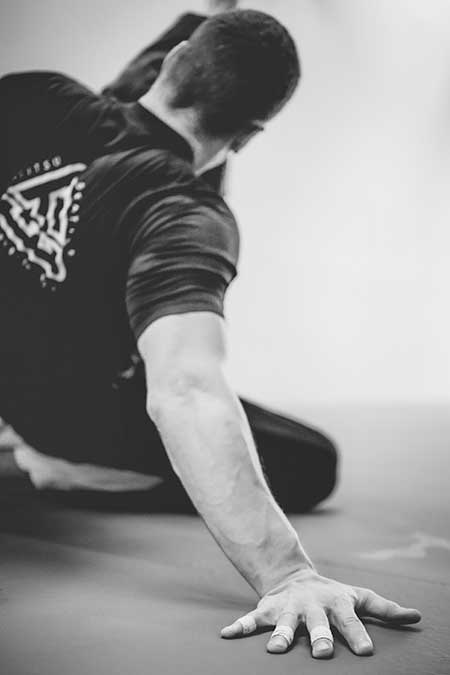
My Program
I started with a 32kg kettlebell for swings and in the first week easily did 5 swings on the minute for 20 minutes. I used that first week as a transition week and the next week moved to 5 swings every 30 seconds for 10 minutes. I probably could have pushed this a few minutes longer, but it was more important to me to be in it for the long haul.
Over 12 weeks, I worked up to 20 minutes of 5 swings with 32kg every 30 seconds (200 total), adding about one minute per week on average.
For get-ups, I started with relatively light weights (for me). I used a 32kg kettlebell for heavy days, 28kg kettlebell for medium days, and a 20kg kettlebell for light days. My sessions included 30-40 minutes of continuous get-ups. On the light days, I was primarily focused on training resilience with head and arm rotations, pauses and presses at various positions, and a mix of the high-bridge and low-sweep. On medium days, I practiced “perfect” full get-ups, and on heavy days I did 1-3 partial reps.
Near the end of 12 weeks, I started introducing the 36kg kettlebell into my heavy days and have now transitioned to the 36kg kettlebell entirely. While 36kg may not seem all that heavy for single get-ups, when you do 3 partial get-ups in a row without putting the kettlebell down, switch sides, and continue for 30-40 minutes, believe me, the time under tension adds up.
I also added a few things after discussing my progress with Pavel: easy grease-the-groove pullups two times a week, Russian hockey deadlifts, and long hangs for some extra durability (both are covered in StrongFirst Resilient).
Adding a “Second Wind”
I also used this training as a practice ground for Second Wind breathing.
In between my sets of swings, I did fractional breathing (two sniff-in breaths on the downswing and a power breath on the upswing). Between sets, I practiced my “Darth Vader” breathing, occasionally adding in emergency recovery breathing for more rapid recovery when needed.
During sets of the get-up, I practiced improving my vital lung capacity with 1+3 breathing. And while cooling down with the stretches from Simple & Sinister (90/90 stretch and QL straddle), I did hypercapnic breathing as well.
Unfortunately, I don’t have space to go into these breathing techniques in-depth, but fractional breathing, emergency recovery breathing, and “Darth Vader” breathing are covered in the course Kettlebells StrongFirst. They are also (along with 1+3 breathing and hypercapnic breathing) covered in the SECOND WIND express online training course.
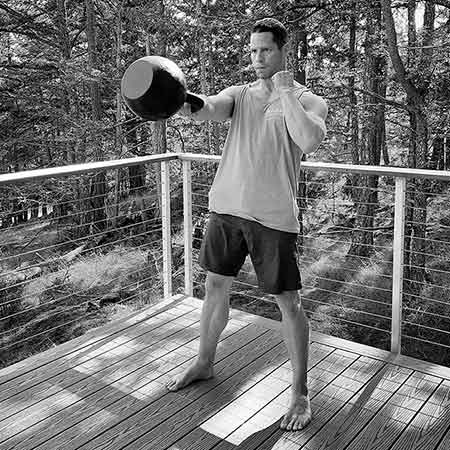
Key Takeaways
I have enjoyed everything about this program and have since begun my second 12-week cycle with the 36kg for swings and heavy get-ups. Once I’m able to do 5 one-arm swings every 30 seconds for 20 minutes and get-ups for 30-40 minutes with 36kg while passing the talk test, I’ll continue onto the next program.
Completing this program consistently has taught me a lot:
- “Mat cardio” can’t just be gained on the mats—building additional aerobic capacity is key. This means spending less time mimicking redline BJJ training with conditioning work and spending more time with anti-glycolytic training. This style of training made a massive improvement in my overall conditioning for BJJ, especially on days with twelve eight-minute rounds!
- Slow progressions work, as did starting lighter than my ego wanted me to. While it’s always tempting to do more sooner, progress simply takes time. Measure progress in months and years, not in weeks—the continuity of the training process pays off over time.
- Cycling tension and relaxation for BJJ can be trained off the mats too. One of my biggest findings was training relaxation, particularly when things got hard. On minute 18 of one-arm swings, I needed to find space to relax—both during and in between sets. Simple habits like not death-gripping the kettlebell at the top of the swing, while continuing to stay tight everywhere else (standing plank) has already carried over to BJJ.
- Get-ups are straight magic for bulletproofing shoulders. My shoulders felt incredible after 12 weeks of varied get-ups, and the additional training of “in-between” strength has kept my joints healthy. Get-ups involve a set of movement patterns that are very common in BJJ. The better I get at them, the better I will be at performing them against other humans.
- Second Wind breathing can add 20-30% to overall output. This is a rough estimate, but my weekly goals felt much easier to reach once I added these modes of breathwork into my training. This has also carried over onto the mats with great success.
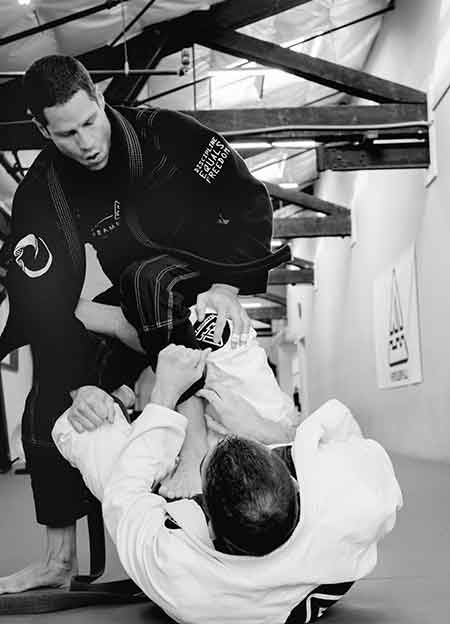
Conclusion
An effective grappler, especially when looking to compete, already has a lot of things to focus on: positions, escapes, submissions, takedowns, takedown defense, and more. The number of technical skills to learn in BJJ is truly infinite. To be at your absolute best, you will also need to focus on building strength, optimizing nutrition, increasing aerobic endurance, improving joint health and mobility, and getting enough sleep and recovery.
Given these demands, the best strength and conditioning program is going to focus primarily on GPP (general physical preparation) with a little bit of sport-specificity (like the partial get-up) and not take anything away from your main practice. This program, simple as it seems, is one of the best I’ve found for this. I’d highly recommend it for anyone who wants to get stronger and more powerful, become more resilient to injury, and improve their conditioning on the mats.
To learn more, check out Kettlebells StrongFirst on BJJ Fanatics,
StrongFirst Resilient, and Second Wind express.
Photo credit (for BJJ photos only) by Emerson Santos, https://www.emersonsantosiiphotography.com/
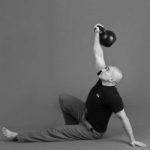
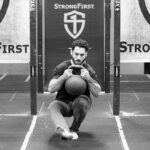

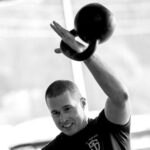

I might have missed something in the article, so I apologize in advance, but what makes the heavy day different from the medium day if you´re using the same size bell? Or is the heavy day a different size bell than the medium day? Thanks in advance.
For the getups, the kettlebells are heavy, medium, and light. For example, 36kg, 28kg, and 20kg.
For the swings, the “heavy” day is for setting a new baseline (i.e. moving from 9 minutes to 10 minutes). The medium day is to continue with your new baseline, and the light day switches to 2-hand swings and is for active recovery.
It’s definitely worth picking up the eBook and video set on BJJ Fanatics for this program and the others – they run store-wide sales every few days.
Thank you, Mike!
Amazing article. Thank you.
Just for clarification, when you say “continuous get ups” , I’m guessing the means you did get ups for 30-40 minutes, but using the talk test to between reps?
Or is it fully continuous?
I use the talk test and do fast & loose between getups – more so as the volume accumulates.
Hi Mike,
Great article! 12 eight minute rounds in BJJ is very impressive, how often do you spar high intensity without compromising your central nervous system? Thanks.
George B.
Hard sparring is just 1x/week, and only if I’m feeling up to it. Similar to strength training, I keep most of my training “between 60-80% of my max” and optimize for volume over time vs. peaks and valleys. Heavy, medium, and light days for both.
In BJJ, injuries (even minor ones) can keep you off the mat for extended periods of time. To get better, you need the “reps”, so I optimize for mat time over intensity.
Good article, very relatable. Having to move toward this type of training and mentality as i approach age 40.
Feeling athletic and limber is much more important than bulking up
Are you going to implement q&d into the training at some point?
For sure, I have run Q&D a number of times – I love it. It’s probably my most returned-to program. I always run programs standalone or as they were generally intended (i.e. I don’t mix and match). I will return to it later this year. You can read about my initial results on page 53 of the book 😉
So it’s very similar to what I used to do. I’d do ten swings emom, next swing day I’d rest a minute after ten swings, next time I’d either take my time or do two handed. Looks like a good protocol though. Keep it up.
Great article Make!
Great article! Very interested in doing the program. On average, how long did the sessions take?
Thanks. Usually about an hour, depending on where I was on the swing progression.
Excellent article! Just curious what your GTG pull-up days looked like if you only did them twice weekly?
Thank you, Chris. I did 6-7 sets of 3-5 pull-ups spaced out every 1-2 hours throughout the day.
Excellent summary of a great series of programmes. The breathing comment really resonated with me.
I recently worked up to 20 minutes of 36 kg swings E30OT30 and now need a bigger bell…!
I have a question about the 5 swings every 30 seconds “until hitting 20 minutes or progress stalled for two weeks in a row.” When you say you started over with a heavier weight for the on-the-minute swings, would you go back to the original weight for the on-the-30 swings? I don’t have a heavier ‘bell than the 32kg, so I’m just wondering.
The progression is to ‘bell up’ with on-the-minute swings until you get back to 20 minutes, and then move back to on-the-30 but with the heavier kettlebell. If I didn’t have a heavier kettlebell, I would continue to do on-the-30 with the 32kg for a while to further lock in the gains, and then consider moving to the more advanced program in the series (clean & jerk).
Great article. I have been trying to make a similar switch focusing on my strength training as a focus for sport rather than it being the sport itself.
I would really appreciate it if articles like this provided a table/chart laying out the protocol you followed for easier implementation, just a thought for future posts.
Again, great stuff.
Thanks Jacob!
Just FYI but when you purchase the set from BJJ Fanatics, you get an eBook outlining all of the programs in detail — as well as a great 3-volume video series. They are running a 51% off Prime Day sale across the site right now actually, their biggest sale ever.
Amazing how it all comes back to the basics. Started with swings and get ups, went crazy with variety for varieties sake, and am now back to doing swings and get ups.
If it ain’t broke…
I am doing the same program currently and really enjoying it (well, maybe not so much the 5 swings on 30 sec part :D). Is there a specific reason why you chose 36kg for next cycle, while the program recommends 8 kg jumps?
Good question. Based on my experience with timeless Sinister (and my bodyweight) I just knew 40kg would be too big of a jump for me right off the bat.